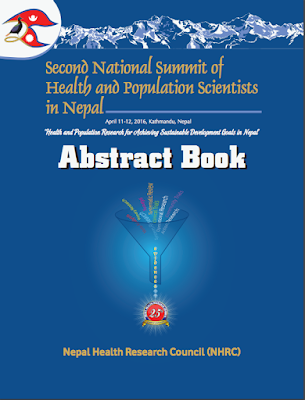Nepal Health Research Council celebrated 25 glorious years of its establishment on 11th April, 2016. The Second National Summit of the Health and Population Scientists in Nepal was held on 11th-12th April, 2016 as a continuum and part of Silver Jubilee celebration with the theme of “Health and Population Research for Achieving Sustainable Development Goals in Nepal”. Health and Population Scientists as a group contributed immensely to promote evidence informed decision making process and it has been instrumental to achieve many of the goals of MDGs. Annual gathering and provision of platform for the scientists were phenomenal in sustaining the MDG achievements and to encourage achieving SDGs as unfinished agendas of the MDGs in the health sector.
Objectives of the Summit were:
- To bring health and population scientists together to promote evidence informed decision-making process for optimal health and wellbeing of Nepalese people
- To encourage health and population scientists and practitioners for responsible conduct of research on health and development
- To discourse and find out the way forward on emerging health and population issues for strengthening national health system of Nepal for achieving SDGs
What’s new this year?
This year there were 27 thematic areas for oral and poster presentation in the Summit in order to have diversity in the scientific sessions and cater a wide group of audience.
Read more: The 2016 NHRC Summit !!!
 |
| Sourse: nhrc |
Download here: 1. The 2016 NHRC Summit Abstract Book;









